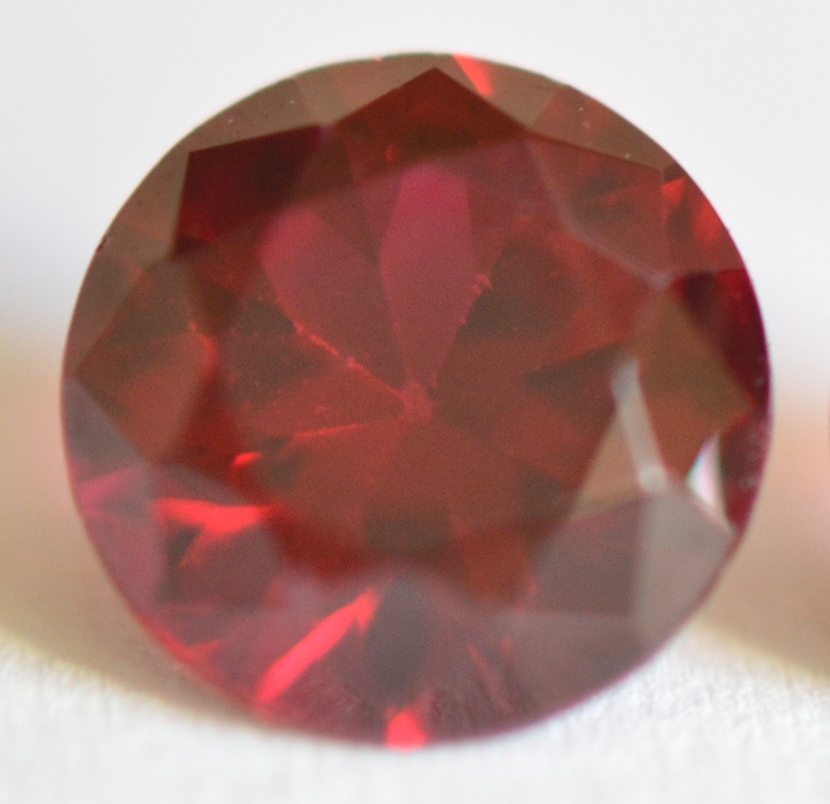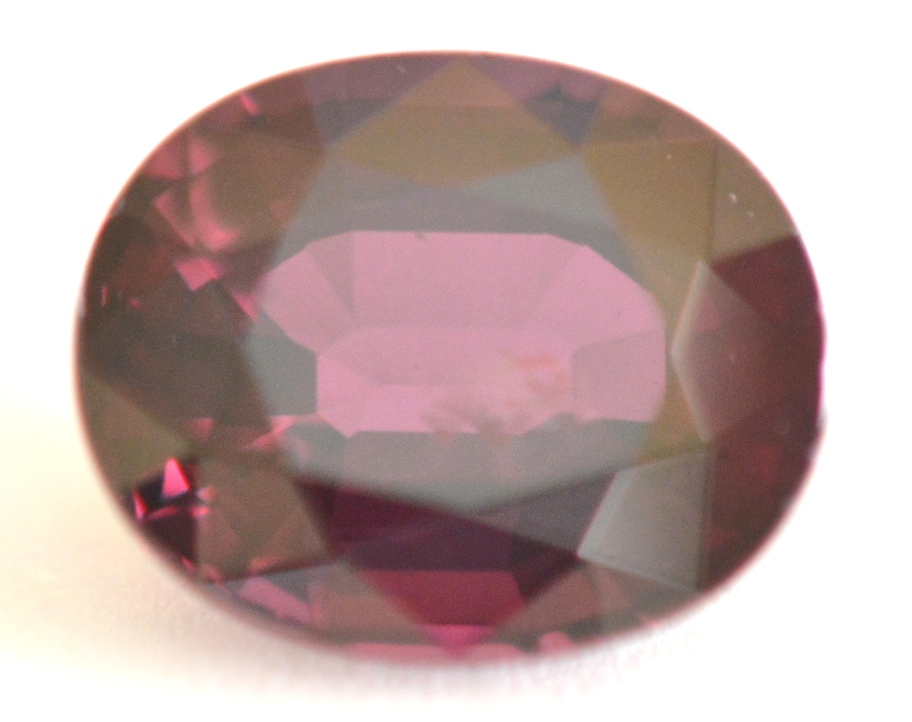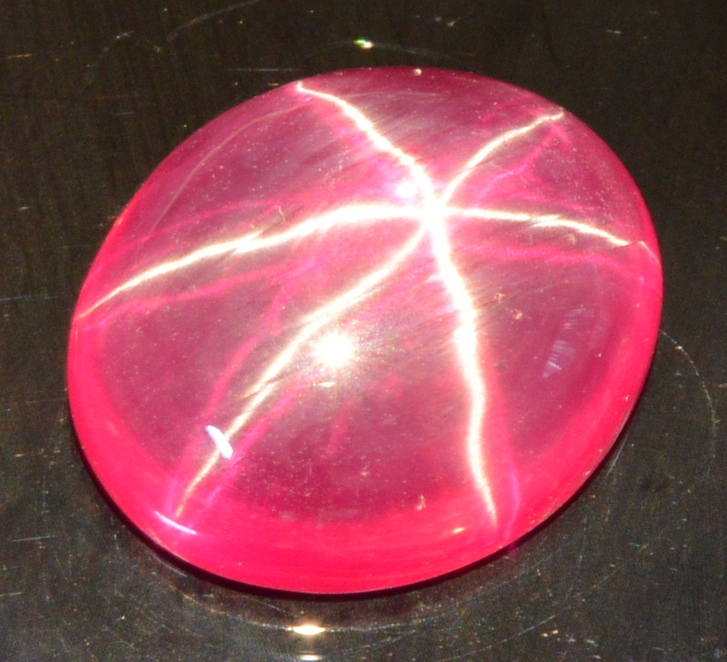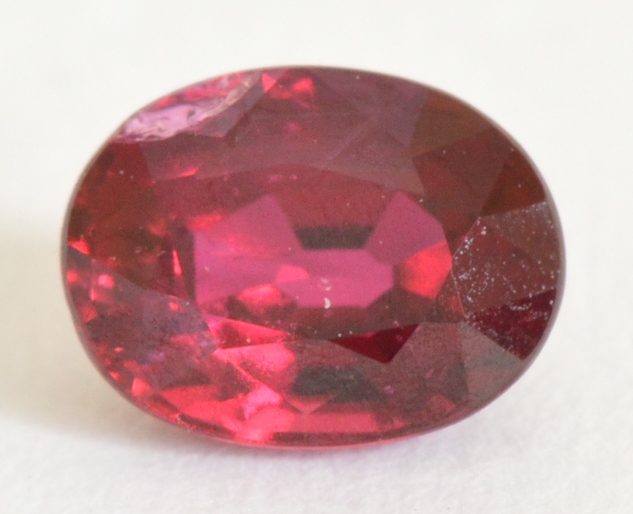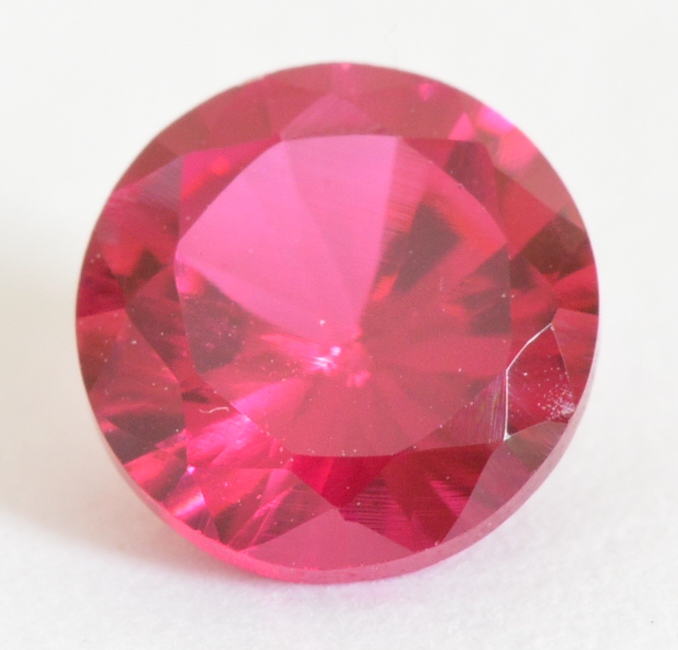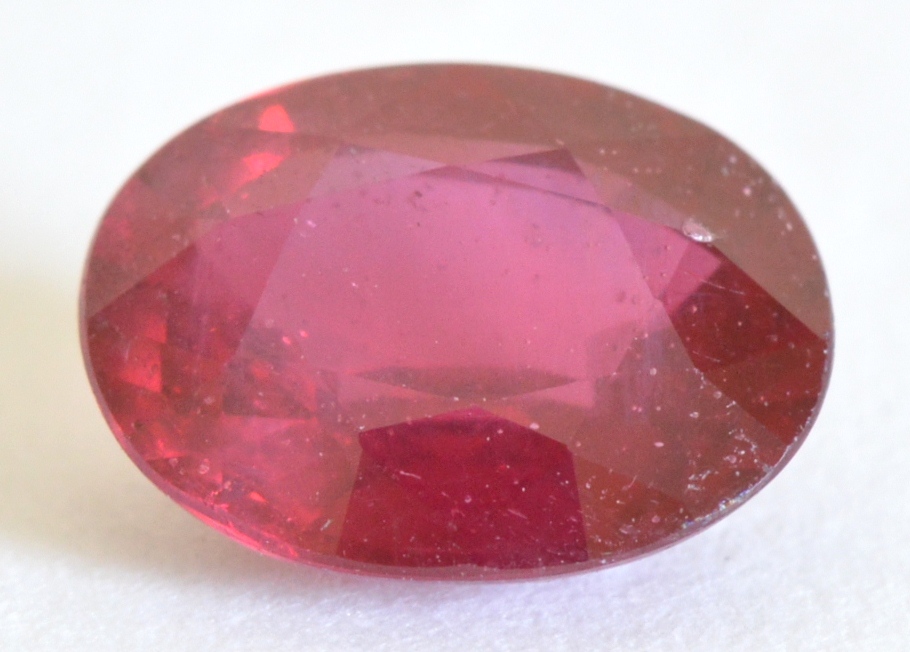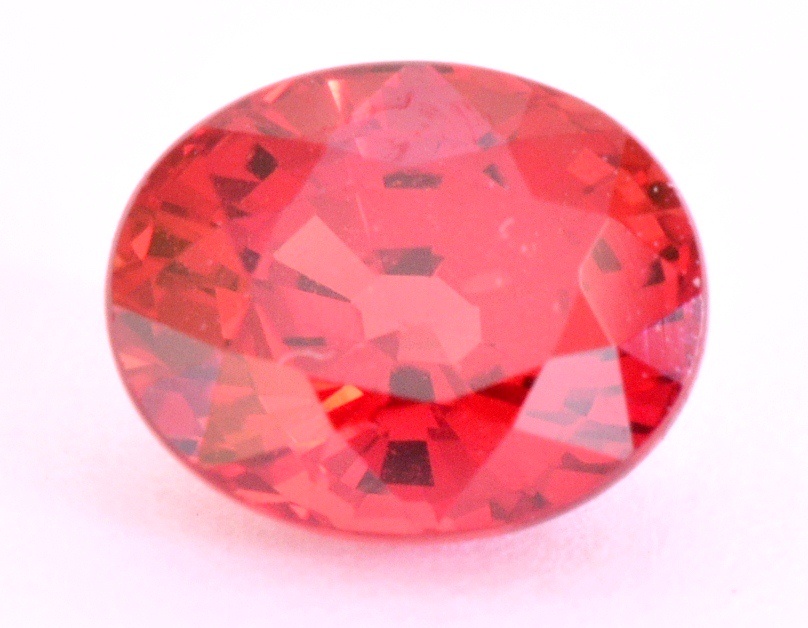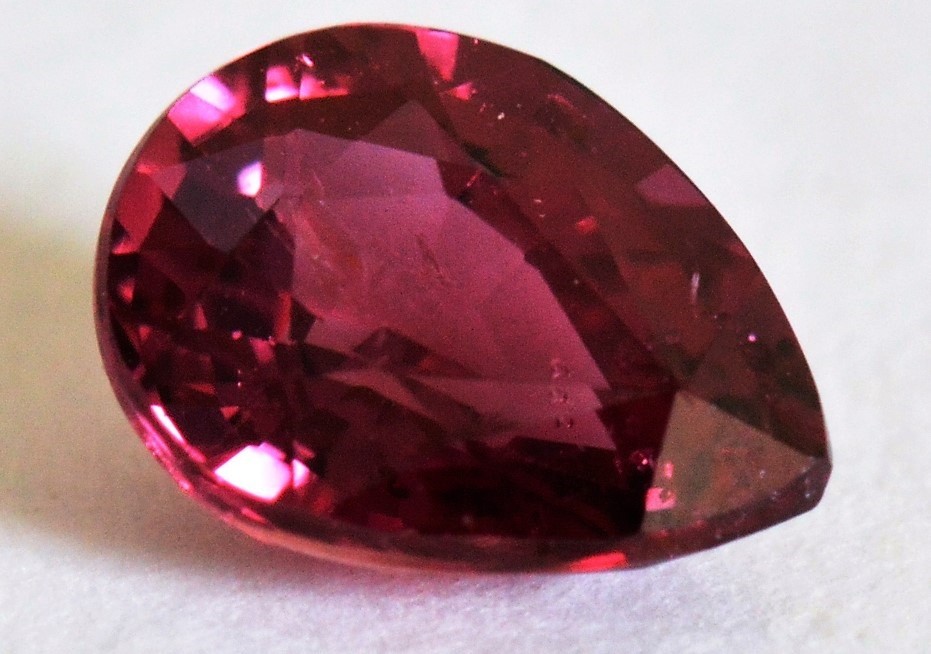Ruby
Natural vs. Synthetic: The red color of Ruby is due to chromium, and in natural Ruby, red color can be modified by iron, vanadium and color processes. A handheld magnet cannot be used to definitively distinguish natural Ruby from synthetic Ruby, as both can be weakly magnetic. But as with Sapphire, natural Ruby is generally more magnetic (Weak to Moderate, SI <20-113) because it contains a small amount of detectable iron (Fe3+) in addition to chromium (Cr3+).
Natural Ruby
Moderate, (SI 55)
Natural Dark Red Ruby
Thailand, Moderate, (SI 113)
Concentration of Iron: Iron (Fe3+) not only raises the magnetic susceptibility in natural Ruby, it also it also modifies the pure red color imparted by chromium. As we noted with high-iron Sapphires, Rubies with higher iron content (approx. 0.5%-1% iron oxide Fe2O3) and higher magnetic susceptibility generally have gray or black undertones, resulting in darker or more subdued red colors. The resulting appearance can closely resemble red Garnet, as illustrated by the dark Thai Ruby pictured below (left). This gem has the highest magnetic susceptibility (113 SI) of any Ruby tested in our study.
Rubies that have more vivid and purer red colors (as the Burma Ruby pictured below right) have higher chromium content and less magnetic susceptibility than darker Rubies. Burma Rubies can have very low iron content (< 0.1% iron oxide Fe2O3).
In low-iron Rubies with vivid red color, we can see chromium absorption spectra using a spectrometer or a hand-held spectroscope. As with Sapphire, Rubies formed in metamorphic low-iron regions such as Mogok in Burma or Winza in Tanzania tend to show the purer red colors, while Rubies from igneous high-iron regions such as Thailand tend to show dark grayish-red colors and greater magnetic attraction.
High chromium content also causes some natural Rubies, and all synthetic Rubies, to fluoresce bright red under long wave ultraviolet light. Fluorescence may also be visible to some degree in daylight, adding brightness to the daylight color of the Ruby. Synthetic Rubies fluoresce more brightly under longwave UV light than most natural Rubies since they contain more chromium (approx. 2% chromium oxide Cr2O3) and no significant iron to quench fluorescence.
Our investigations of natural Ruby found that the degree of fluorescence corresponds inversely to the measured degree of magnetic susceptibility. In other words, the more magnetic a natural Ruby is, the less fluorescent it is. This is because iron suppresses or masks the fluorescence produced by chromium, as noted by Basil Anderson while working with the spectroscope in the mid-20th century. The low-iron Burma Ruby pictured below is weakly magnetic and shows strong red fluorescence under long wave UV light.
Natural Vivid Red Ruby
Burma, Weak, (SI 48)
Treatment with high heat can improve the clarity of Ruby by dissolving Rutile "silk". Extended heating at high temperatures can also enhance color by actually removing blue color, but heat has no direct effect on red color (Kurt Nassau, 1981). Because chromium rather than iron is the predominant metallic chromophore in Ruby, heat treatments may also have no effect on magnetic response or magnetic susceptibility, as the valence state of chromium (Cr3+) is not changed. Only the valence state of the small amount of iron changes. However, heat treatment may reduce the overall magnetic susceptibility of any gem to some degree, regardless of the valence states of the metals involved.
This concludes our discussion of Sapphire and Ruby. To read our in-depth 3-page report on magnetism in Spinel, go to Spinel.
________________
© Kirk Feral 2014, All Rights Reserved. These materials may be duplicated for educational purposes only. No part of this website may be duplicated or distributed for profit, for commercial purposes, or for posting to another website, without the expressed written consent of the copyright holder.
Beryllium Diffused Ruby, Weak (SI 74)
Glass-filled Ruby, Weak (SI 26)
Synthetic Star Ruby
Diamagnetic (SI < 0)
Synthetic Ruby
Weak (SI 17)
Synthetic Ruby is colored almost entirely by chromium (Cr3+), and any iron is usually present in tiny amounts (less than 100 parts per million). Synthetics are therefore inert or very weakly magnetic (Inert to Weak, SI 0-17). When we see any magnetic attraction in a synthetic Ruby, we are detecting chromium rather than iron. Natural and synthetic Rubies contain a higher concentration of chromium than most other types of gemstones, but the amount chromium needed to create their vivid red color is still very low. Chromium content in natural Ruby hovers at the absolute lowest level of magnetic detectability by an N52 neodymium magnet (approx.0.4% chromium oxide). Synthetic Star Rubies are also encountered. Synthetic rutile is used to create the asterism.
Synthetic Ruby
Weak, (SI < 20)
^
Treatments: Unfortunately, a magnetic wand does not provide a means to distinguish between treated and untreated Ruby. Natural Rubies that are beryllium diffused or glass-filled have a similar magnetic susceptibility range as untreated natural Ruby. The Beryllium-diffused gem below (left) is a Sapphire from Songea, Tanzania that has been diffused to alter the color to bright orangey red. The glass-filled Ruby on the right was created by filling the crevices in low-quality Ruby with lead glass that has a high refractive index similar to the R.I. of Ruby. Both of these gems show weak magnetic responses, as do untreated Rubies.
Natural Ruby, Weak (SI 39)
Daylight and UV Fluorescence
< 2
Any Ruby that shows anything greater than weak magnetic attraction during floatation is almost certainly natural. An inert response points towards synthetic origin. However, some high-quality Rubies from low-iron regions such as Burma and Tanzania might also possibly be inert (diamagnetic). In our limited study, we did not find any natural Rubies that were not attracted to a magnet.
Magnetism in Gemstones
An Effective Tool and Method for Gem Identification
© Kirk Feral

